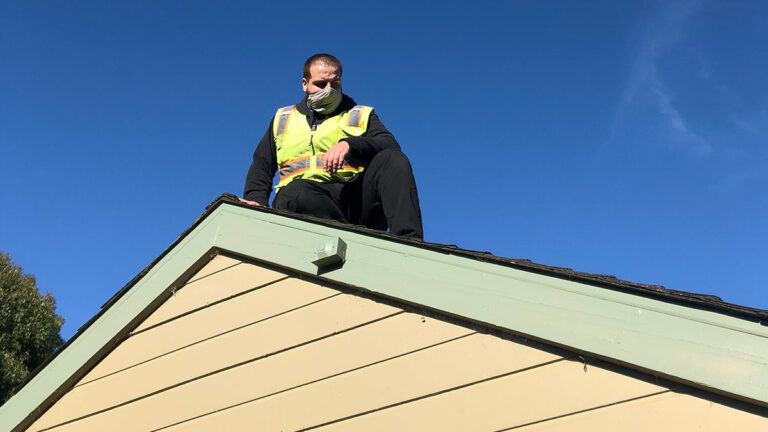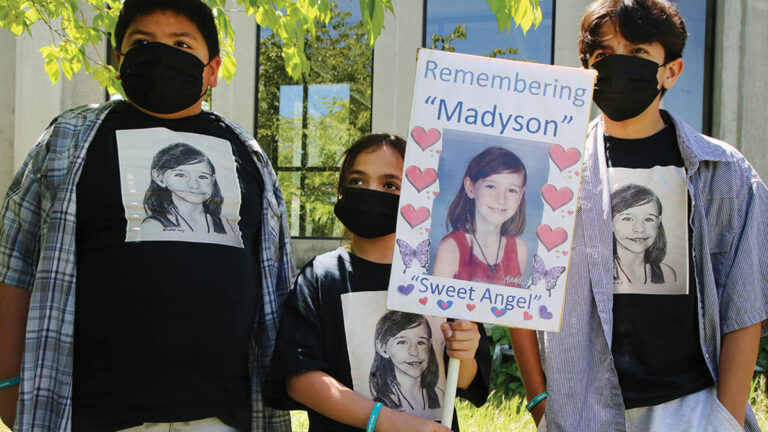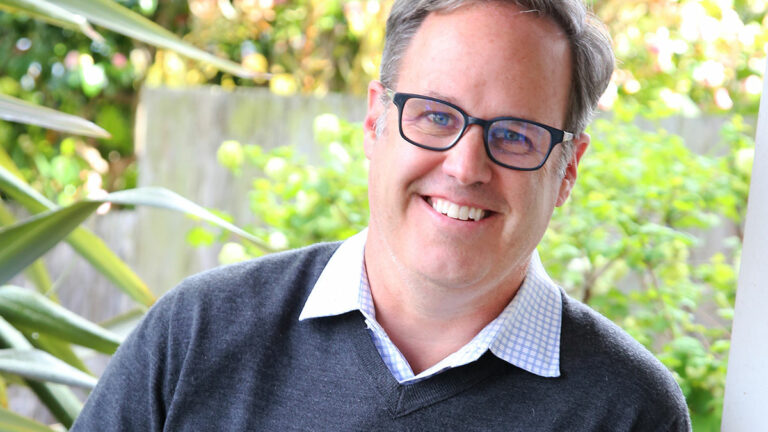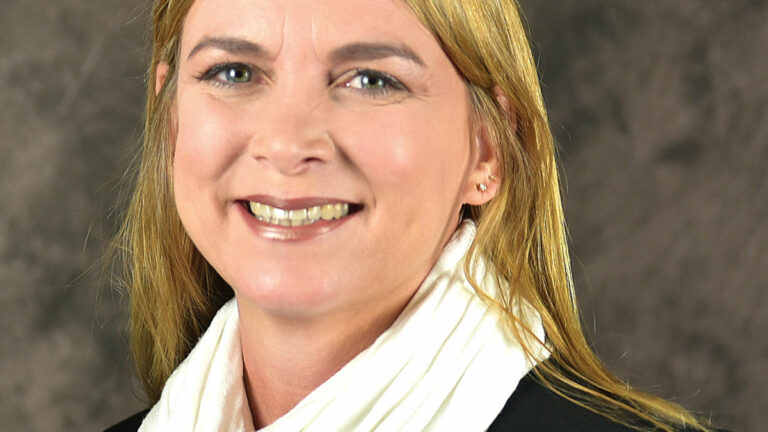A weekly guide to what’s happening.
ARTS AND MUSIC
ANTHONY ARYA, TAYLOR RAE & LINDSEY WALL LIVE AT MICHAEL’S ON MAIN Much-anticipated reunion of three of Santa Cruz’s favorite songwriters and performers. $45 for dinner and show, seated. Saturday, May 1, 6:30pm. Michael’s on Main, 2591 S Main St., Soquel.
ART OF COMMUNICATION FESTIVAL Nonviolent Communication Santa Cruz invites the public to a two-day series of online workshops, including Parenting Without Coercion, Scarcity and Abundance, Self-Care, Couples Without Defensiveness, and Conflict Improv. Sunday features a panel discussion of nonviolent communication and social justice with Jessica Escobedo, Kadijah Means, Rick Longinotti, and Deanna Zachary, moderated by Kristin Masters. Workshop leaders include Armando Alcaraz, Caren Camblin, Michelle Leah Gomez, Rick Longinotti, Bar Lowenberg, Jean Morrison and Kristin Masters. Visit nvcsantacruz.org for more information and Zoom access. Saturday, May 1, 9:30am.
HOW A BOTANICAL ARTIST LOOKS AT A ROSE WITH MARIA CECILIA FREEMAN During this online lecture hosted by the Santa Cruz Museum of Natural History, learn how to get to know a rose in order to illustrate it. Artist Maria Cecilia Freeman will demonstrate how to draw and paint petals, leaves and other parts that help distinguish a rose. Once you draw the identifying parts of a particular rose, you’ll recognize it wherever you see it. We’ll explore native and heritage roses and observe their particular characteristics. Wednesday, April 28, noon-1pm. Santa Cruz Museum of Natural History, 1305 East Cliff Drive, Santa Cruz.
MAKERS MARKET: THE ART OF NATURE During this outdoor Makers Market hosted by the Santa Cruz Museum of Natural History, meet featured artists from our annual science illustration exhibit, “The Art of Nature,” watch them at work through live demonstrations at their booths, and support their work by going home with prints, stickers, cards, cups and more. We will also have an illustration station so that you can create your own works of art inspired by the native plants in our Garden Learning Center. This is also the first day of Santa Cruz Museum Month and admission to the museum will be free all month! So pop in to explore “The Art of Nature” exhibit while you’re here. Wear your mask, keep your distance, and have fun in and out of the museum. Saturday, May 1, 11am-3pm. Santa Cruz Museum of Natural History, 1305 East Cliff Drive, Santa Cruz.
POWER & VOICE: FOUNDATIONS FOR BRILLIANCE AND RESILIENCE Join Bernadine Rosso of Women Who Are Up to Something for a virtual retreat this spring. Bernadine has been supporting, guiding, coaching, mentoring and witnessing the power and potency of women of all ages for over 25 years. These online gatherings throughout the day are opportunities to get support and to align with a community of powerful women. Join us for one or more of these sessions on Zoom: Playful Energizing Curiosity, Step Out Courageously, and Exciting Intentional Success. Visit the event website for details and registration: womenwhoareuptosomething.com/events/power-voice. Saturday, May 1, 10am. $33/session.
TOBY GRAY COMBO STOCKWELL CELLARS Excellent wines and cool, easy listening music with a repertoire of several hundred of your favorite songs and fun heartfelt originals. Paying tribute to some of the founding voices of jazz, Motown, rhythm and blues, country, and rock. Great music and stories of touring with It’s a Beautiful Day, Dick Clark, and a multitude of characters from San Francisco’s Summer of Love and LA music scenes. Artist sights and sounds: highwaybuddha.com. Friday, April 30, 5:30pm. Stockwell Cellars, 1100 Fair Ave., Santa Cruz.
WESTSIDE MARKETPLACE Shop local at the new Westside Marketplace! First Sundays at the Wrigley, featuring local art, handmade and vintage shopping, food trucks and pop-ups all outdoors. Free admission, friendly leashed pups are welcome! Remember to social distance as you shop and wear your mask. If you’re not feeling well, please stay home. There will be hand sanitizing stations at the market and signs to remind you about all these things! Sunday, May 2, 11am-4pm. The Old Wrigley Building, 2801 Mission St., Santa Cruz.
COMMUNITY
FAMILY SANGHA MONTHLY MEDITATION Come help create a family meditation cooperative community! Parents will meet in the main room for about 40 minutes of silent meditation, followed by 10-15 minutes of discussion about life and mindful parenting. Kids will be in a separate, volunteer-led room, playing and exploring mindfulness through games and stories. Parents may need to help with the kids for a portion of the hour, depending on volunteer turnout. All ages of children are welcome. Please bring toys to share. Quiet babies are welcome. Donations are encouraged, though there is no fee for the event. Sunday, May 2, 10:30am-noon. Insight Santa Cruz, 740 Front St. #240, Santa Cruz.
FOOD WASTE WEBINAR SERIES Keep your cash out of the trash! Join this webinar series created by the City of Santa Cruz to learn all about wasted food and reducing waste in your life to keep cash out of the trash. Plus, be entered to win awesome prizes like a compost bin, and more, for attending. Did you know that there is not only a huge environmental impact from wasting food, but that the average family of four will toss out $1,600 or more a year in wasted food? To help us dive deeper into the journey of wasted food topics, there will be a wonderful lineup of guest speakers, including Chef Kendra Baker of The Glass Jar demoing “Freestyle Cooking,” Farmer Javier Zamora of JSM Organic Farms, Chief Operations Officer Kristi Locatelli of Wild Roots Market, and Donation Center Executive Director Tim Brattan of Grey Bears. Join us for one or all three webinars to explore where food comes from and goes and why you have an opportunity to make a huge difference for the planet and maybe even your wallet. You may be surprised with what you learn. Tuesday, May 4, 5-6pm. City of Santa Cruz Public Works Department, 110 California St., Santa Cruz.
GREY BEARS BROWN BAG LINE If you are able-bodied and love to work fast, this is for you! Grey Bears could use more help with their brown bag production line on Thursday and Friday mornings. As a token of our thanks, we make you breakfast and give you a bag of food if wanted. Be at the warehouse with a mask and gloves at 7am and we will put you to work until at least 9am. Call ahead if you would like to know more: 831-479-1055, greybears.org. Thursday, April 29, 7am. California Grey Bears, 2710 Chanticleer Ave., Santa Cruz.
SALSA SUELTA FREE ZOOM SESSION Keep in shape! Weekly online session in Cuban-style Salsa Suelta for experienced beginners and up. May include mambo, chachacha, Afro-Cuban rumba, orisha, son montuno. No partner required; ages 14 and older. Contact to get the link. salsagente.com. Thursday, April 29, 7pm.
TENANTS’ RIGHTS HELP Tenant Sanctuary is open to renters living in the city of Santa Cruz with questions about their tenants’ rights. Volunteer counselors staff the telephones on Tuesdays, Thursdays and Sundays from 10am-2pm. Tenant Sanctuary works to empower tenants by educating them on their rights and providing the tools to pursue those rights. Tenant Sanctuary and their program attorney host free legal clinics for tenants in the city of Santa Cruz. Due to Covid-19 concerns, all services are currently by telephone, email or Zoom. For more information visit tenantsanctuary.org or follow us on Facebook at facebook.com/tenantsanctuary. 831-200-0740. Thursday, April 29, 10am-2pm. Sunday, May 2, 10am-2pm. Tuesday, May 4, 10am-2pm. Tenant Sanctuary, 703 Pacific Ave., Santa Cruz.
UNDERSTANDING ALZHEIMER’S AND DEMENTIA WEBINAR Alzheimer’s disease is not a normal part of aging. Join us to learn about the impact of Alzheimer’s; the difference between Alzheimer’s and dementia; stages and risk factors; current research and treatments available for some symptoms; and Alzheimer’s Association resources. To register or for more information please call 800-272-3900. Monday, May 3, 1-2:30pm.
UNDERSTANDING AND RESPONDING TO DEMENTIA-RELATED BEHAVIORS WEBINAR Behavior is a powerful form of communication and is one of the primary ways for people with dementia to communicate their needs and feelings as the ability to use language is lost. However, some behaviors can present real challenges for caregivers to manage. Join us to learn to decode behavioral messages, identify common behavior triggers, and learn strategies to help intervene with some of the most common behavioral challenges of Alzheimer’s disease. To register or for more information please call 800-272-3900. Tuesday, May 4, 1-2:30pm.
GROUPS
CAREGIVER SUPPORT GROUP VIA TELEPHONE Support groups create a safe, confidential, supportive environment or community and a chance for family caregivers to develop informal, mutual support and social relationships as well as discover more effective ways to cope with and care for your loved one. To register or for more information please call 800-272-3900. Wednesday, April 28, 2pm.
ENTRE NOSOTRAS GRUPO DE APOYO Entre Nosotras support group for Spanish-speaking women with a cancer diagnosis. Meets twice monthly. Registration required; call Entre Nosotras 831-761-3973. Friday, April 30, 6pm. WomenCARE, 2901 Park Ave., Suite A1, Soquel.
OVEREATERS ANONYMOUS All our meetings have switched to being online. Please call 831-429-7906 for meeting information. Do you have a problem with food? Drop into a free, friendly Overeaters Anonymous 12-Step meeting. All are welcome! Sunday, May 2, 9:05-10:15am.
VIRTUAL MUSIC MEDITATION AND RELAXATION FOR CAREGIVERS Join us for a 30-minute music meditation to lift your spirits and provide relaxation. This experiential session features the musical stylings of our board-certified music therapist. Open to all caregivers in the community. Register at zoom.us/webinar/register/WN_4Jp-9GMTRVWdHCJM9lMMCg. Tuesday, May 4, 10:30am.
WOMENCARE ARM-IN-ARM WomenCARE ARM-IN-ARM Cancer support group for women with advanced, recurrent, or metastatic cancer. Meets every Monday at WomenCARE’s office. Currently on Zoom. Registration required; contact WomenCARE at 831-457-2273. All services are free. For more information visit womencaresantacruz.org. Monday, May 3, 12:30pm.
WOMENCARE MEDITATION GROUP WomenCARE’s meditation group for women with a cancer diagnosis meets the first and third Friday from 11am-noon. For more information and location: 831 457-2273. Monday, May 3, 11am-noon. WomenCARE, 2901 Park Ave., Suite A1, Soquel.
WOMENCARE TUESDAY SUPPORT GROUP WomenCARE Tuesday Cancer support group for women newly diagnosed and through their treatment. Meets every Tuesday currently on Zoom. Registration required, contact WomenCARE at 831-457-2273. Tuesday, May 4, 12:30-2pm.
WOMENCARE: LAUGHTER YOGA Laughter yoga for women with a cancer diagnosis. Meets every Wednesday, currently via Zoom. Registration required, contact WomenCARE at 831-457-2273. Wednesday, April 28, 3:30-4:30pm.
OUTDOOR
CONFRONTING CLIMATE CHANGE: FOOD SECURITY IN A CHANGING WORLD The UCSC Division of Physical and Biological Sciences and Division of Social Sciences and the Division of Arts invite you to the seventh annual Confronting Climate Change Conference. This year’s event will include three short on-demand films curated by the Division of Arts with a panel discussion of the films on day one, and a panel discussion on the topic of food security hosted by the Division of Physical and Biological Sciences and the Division of Social Sciences on day two. Both events are free and will be conducted virtually. Make sure to register for one or both events separately; register at confrontingclimatechange.ucsc.edu/attend/registration.html. Wednesday, April 28, 5:30pm.
SEYMOUR CENTER AQUARIA EXPLORATION: MEMBER-EXCLUSIVE VIRTUAL PROGRAM Seymour Center members are invited to join us for a behind-the-scenes look at our jelly exhibit. Watch a live feeding and see how UCSC scientists are exploring these graceful drifters’ open-sea habitat. Preregister in the member portal for the online Aquaria Exploration program (required) at seymourcenter.ucsc.edu/get-involved/join/membership-portal. Please register at least one hour prior to the event start time. For more information, visit seymourcenter.ucsc.edu/aquaria-explorationtuesday. Tuesday, May 4, 3:30-4pm.
VIRTUAL YOUNGER LAGOON RESERVE TOURS Younger Lagoon Reserve is now offering a virtual tour in both English and Spanish. This virtual tour follows the same stops as the Seymour Marine Discovery Center’s docent-led, in-person hiking tour, and is led by a UCSC student. Virtual Younger Lagoon Reserve tours are free and open to the public. Part of the University of California Natural Reserve System, Younger Lagoon Reserve contains diverse coastal habitats and is home to birds of prey, migrating sea birds, bobcats, and other wildlife. See what scientists are doing to track local mammals, restore native habitat and learn about the workings of one of California’s rare coastal lagoons. Access the tours at seymourcenter.ucsc.edu/visit/behind-the-scenes-tours/#youngerlagoon. Sunday, May 2, 10:30am. Seymour Marine Discovery Center, 100 McAllister Way, Santa Cruz.























